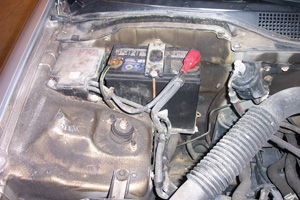A. There are several ways to determine if a battery is “good” or “bad.”
If a battery is fully discharged (no voltage at the terminals), and it won’t accept or hold a charge, it is worn out or damaged internally and needs to be replaced. If it takes a charge but never recovers to full voltage, it is worn out and needs to be replaced. And, if it accepts and holds a charge, but fails to maintain a certain voltage when a load is placed on the battery (or it fails to delivery its normal current), the battery is worn out and needs to be replaced.
 Batteries need to be tested for two things: state of charge (a base voltage measurement that shows if the battery is low or fully charged), and capacity (a load or conductance test that checks the condition of the plates inside the battery).
Batteries need to be tested for two things: state of charge (a base voltage measurement that shows if the battery is low or fully charged), and capacity (a load or conductance test that checks the condition of the plates inside the battery).
Connecting a voltmeter to the battery’s positive and negative terminals (key off and all lights and accessories off) will reveal the charge level of the battery. A reading of 12.66 volts indicates a fully charged battery. If the reading is 12.45 volts or less, the battery is low and needs to be recharged.
Some batteries have a built-in “charge indicator.” A green dot tells you the battery is 75 percent or more charged. A dark indicator (no dot visible), means the cell is low and the battery needs to be recharged. A yellow or clear indicator tells you the electrolyte level inside the cell is low and the battery needs water. If the battery has a sealed top and water cannot be added to the cells, do not attempt to recharge the battery. The battery must be replaced.
A load test or conductance test will tell you if the battery is still usable. The load test is done by applying a current load on the battery (half of its Cold Cranking Amp or CCA rating) with a load tester for 15 seconds. A good battery that is at least 75 percent charged should not drop below 9.6 volts.
A conductance battery tester is faster and easier, and can be performed even if the battery is run down. The conductance tester pulses an alternating frequency signal through the battery to reveal the battery’s condition. If it fails the test, your customer needs a new battery.
Q. How long should a car battery last?
A. All lead-acid car batteries have a limited service life, which is typically four to five years with wet cell batteries, and a couple of years longer with Absorbent Glass Mat (AGM) batteries. How long a battery lasts depends on battery construction (conventional wet cell or AGM, and the durability of the cell plates and connectors), the operating conditions to which the battery is subjected (heat, cold, vibration, frequency of use), the number of discharge/charge cycles it has experienced, and the condition and performance of the vehicle’s charging system.
Any number of things can drastically shorten the life of a car battery, including heat, overcharging, subzero temperatures and excessive vibration. For maximum life, car batteries must be maintained at or near full charge throughout their life. The electronics in today’s cars continue to draw current from the battery when the key is off. Though many models go into “sleep mode” to conserve power, there can still be a steady drain of power that will eventually run the battery down if the car isn’t driven often enough or long enough to fully recharge the battery. The key-off power drain can be fairly high in many late model vehicles (80 milliamps to several hundred milliamps), which means it can take up to 20 minutes of driving every few days to maintain the battery at full charge.













